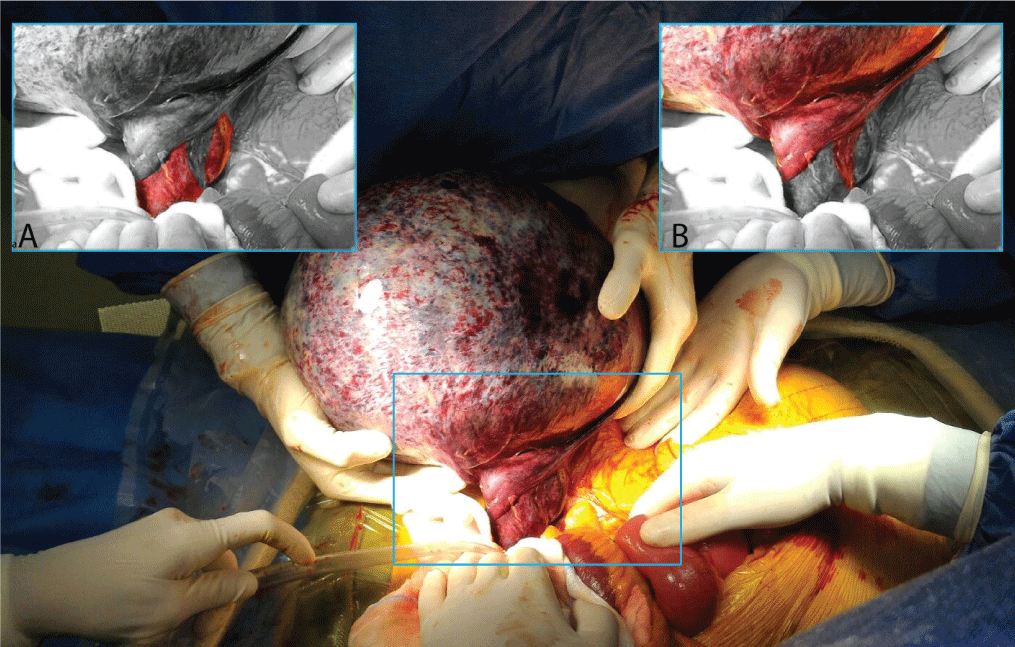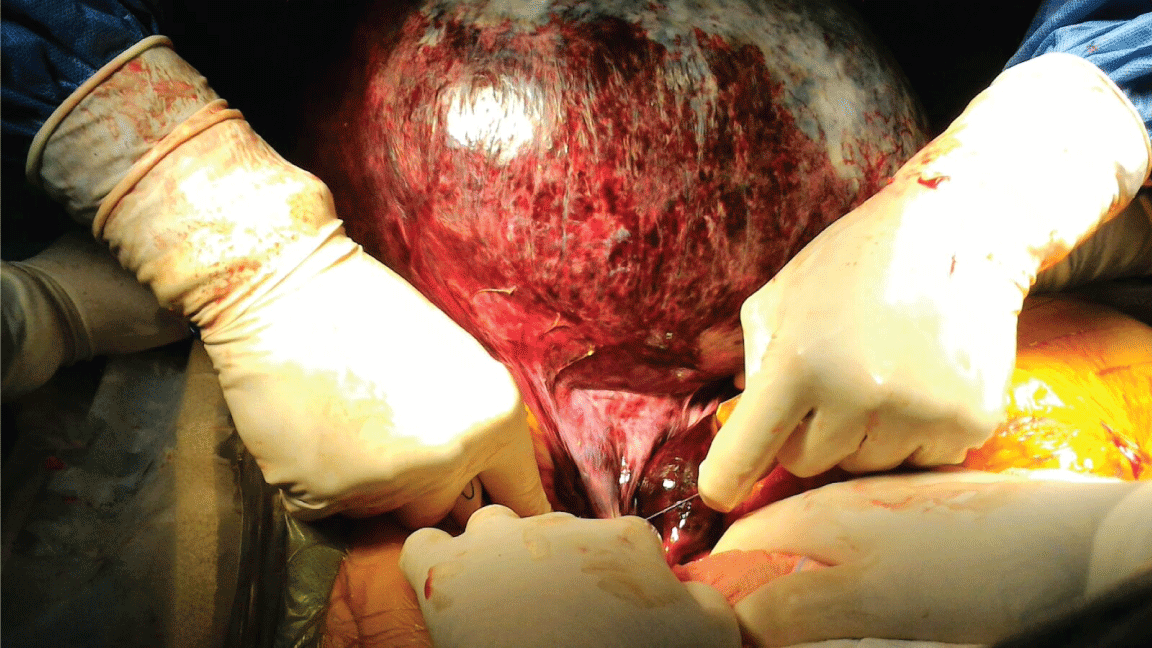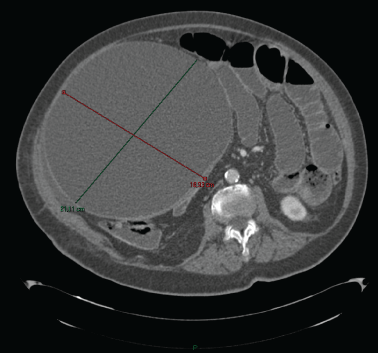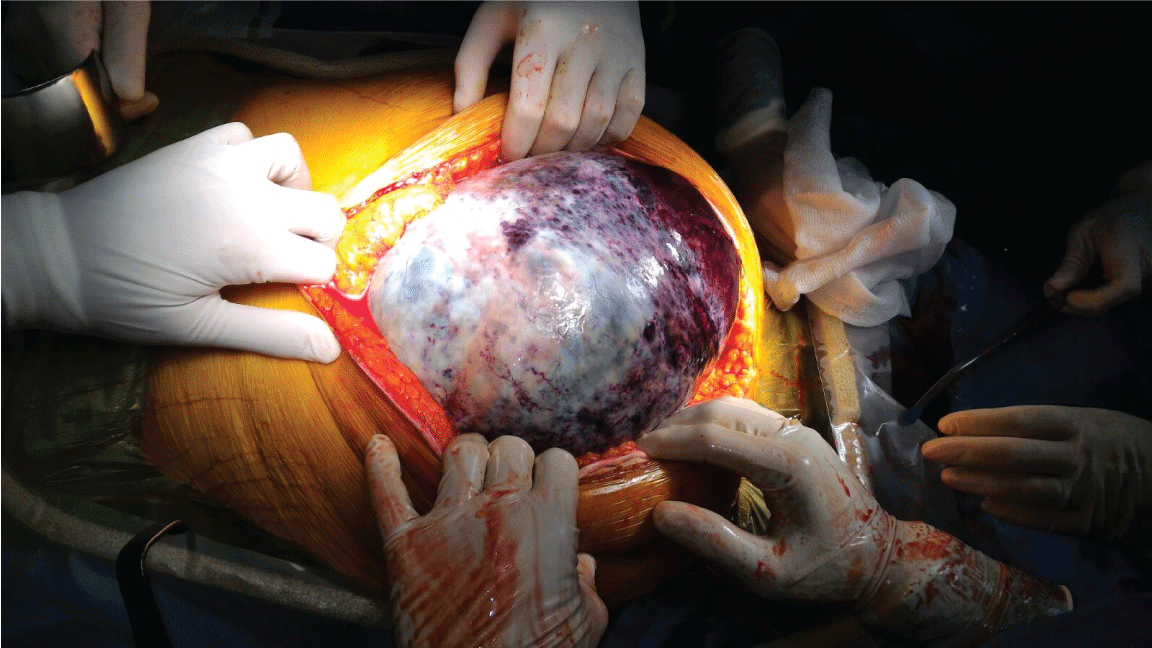International Journal of Radiology and Imaging Technology
Bowel Obstruction from Benign Adnexal Mass in an Elderly Patient
Assenza M*, Rossi D*, De Gruttola I, Scala A, Falaschi F and Modini C
Department of Emergency and Acceptance, Policlinico Umberto I, Sapienza University, Rome, Italy
*Corresponding authors:
Marco Assenza, Department of Emergency and Acceptance, Policlinico Umberto I, Sapienza University, Via delle Capannelle 81, 00176, Rome, Italy, Tel: +39.338.4820656, E-mail: marco.assenza@uniroma1.it
Davide Rossi, Department of Emergency and Acceptance, Policlinico Umberto I, Sapienza University, Via Luigi Bellardi 6 Lotto D Sc. A Int. 13, 00158, Rome, Italy, Tel: +39.339.7034054, E-mail: dravenisout@gmail.com
Int J Radiol Imaging Technol, IJRIT-2-008, (Volume 2, Issue 1), Case Report
Received: December 15, 2015: Accepted: January 22, 2016: Published: January 25, 2016
Citation: Assenza M, Rossi D, De Gruttola I, Scala A, Falaschi F, et al. (2016) Bowel Obstruction from Benign Adnexal Mass in an Elderly Patient. Int J Radiol Imaging Technol 2:008
Copyright: © 2016 Assenza M, et al. This is an open-access article distributed under the terms of the Creative Commons Attribution License, which permits unrestricted use, distribution, and reproduction in any medium, provided the original author and source are credited.
Abstract
Bowel obstruction resulting from ovarian masses is a serious complication of these diseases. This may be caused by bulky masses filling the pelvis and the abdomen, and should be carefully worked out by pre-operative imaging because of their non-specific clinical signs that may be confused with those due to other conditions such as: volvulus, cancer or adhesions. We report the case of a 70 years old woman with a bulky pelvic-abdominal mass of 27 × 20 cm that was found to be an ""ovarian serous cystadenoma" and clinical signs of intestinal obstruction, which was treated by uterus sparing surgery.
Keywords
Serous cystadenoma, Bowel obstruction, Benign ovarian tumor, Uterus sparing surgery, Emergency
Introduction
Ovarian neoplasm can be divided in epithelial, germ cell and sex-cord stromal tumors, the most of them are benign masses 87.8%, the 10% are malignant and the 2.2% are borderline [1] among these the most frequent are epithelial tumors [2].
Epithelial ovarian tumors represent 60% of all ovarian neoplasms and 85% of malignant ovarian neoplasms, their prevalence increases with age and peaks in the sixth and seventh decades of life. Subtypes of epithelial tumors include serous, mucinous, endometrioid, clear cell, and Brenner tumors [2]. Among these benign masses serous cystadenoma has the highest prevalence 67% followed by mucinous 19% and the others [3].
The risk of malignity increases 12-fold from ages 20-29 to 60-69. The overall risk for an ovarian neoplasm to be malignant is 13% in premenopausal women and 45% in postmenopausal women [3].
Literature is relatively poor of reports about small bowel obstruction due to benign causes, but the prevalence of bowel obstruction due to ovarian cancer has been reported as varying from 5.5% to 51%; the major causes of this threatening condition are diffuse peritoneal carcinomatosis, bulky masses filling the pelvis and abdomen or postoperative adhesions [4]. The typical symptoms associated with bowel obstruction are continuous abdominal pain, nausea and vomiting, fever (temperature > 37.7°C) and tachycardia (> 100 beats/min). On physical examination, the most frequent findings are absence of passage of flatus (90%) and/or feces (80.6%), abdominal distension (65.3%), abdominal muscle guarding (37.3%) and rebound tenderness (4.6%) [5-7].
Case Report
We report the case of a 70 years old woman who were diagnosed with intestinal obstruction due to fecaloma four days before in another hospital. She had been hospitalized for two days and had gone through manual emptying of the rectum, fluid therapy and in the end dismissed after two days. After dismission she complained abdominal pain, impaired defecation and flatus relieving, nausea and hiccups which caused her difficulty eating.
At the physical examination she was awaken, alert, collaborating, Her abdomen was symmetrically enlarged, distended and motionless with breathing; at the palpation it was diffusely tender and tympanitic at the percussion, peristalsis was absent while the Blumberg sign was undefined and the rectal exploration showed a relaxed sphincter with the finger dirty of pink mucus.
Laboratory showed Chloride 88 mEq/L (n.v. 98-107) Sodium 134 (n.v. 136-145) Potassium 3.12 (n.v. 3.5-5) C Reactive Protein 25.08 mg/dl (n.v. 0-0.5), Hb 15, Hematocrit 45% (n.v. 35-47%), WBC 13.56 (n.v. 4-10) Neutrophils 79.4%.
The abdominal X-Ray in bed only showed multiple ileal fluid levels in the middle quadrants which only suggested the presence of a bowel obstruction of undefined nature.
The CT scan instead showed the presence of a huge mass (Figure 1 and Figure 2) occupying all the upper part of the pelvis and the right quadrants of the abdomen ending in the sub-hepatic space compressing the bowel.

.
Figure 1: The arrows shows the position of the bowel loops (green) and the vessels (red) that at the opening were twisted together.
View Figure 1
In figure 1 is possible to see signs of the twisting of a vascular peduncle just next to the mass in the pelvis. As shown in figure 2 the diameters of the mass measured on the screen are 21.11 cm the major and 18.93 cm the minor. The mass appears to be filled of fluid content. All these aspects supported the idea of a neoplasm of gynecological origin compressing the bowel, so we decided to operate the patient.
At the opening of the abdomen, via a midline laparotomy, a mass of 27 × 20 cm of diameter and about 8 kg of weight was found (Figure 3) the mass had a vascular peduncle that was attached to the uterus and twisted together with a bowel loop (Figure 4). The peduncle concealed the ipsilateral tube and the ovary and was found exactly where the CT scan showed the twisting of the vessels in contiguity with the bowel loops.

.
Figure 4: Giant ovarian neoplasm which was surgically removed. A) bowel loops B) neoplasm and its twisted peduncle.
View Figure 4
This CT sign suggested us:
a) the presence of a kinking between peduncle and bowel loops
b) the risk of hemorrhage in case of resection of the peduncle without definition and separation of its components;
So, in order to prevent a massive bleeding, it was necessary to derotate the kinking in order to separate bowels and vessels and clamp the vessels before extracting the neoplasm (Figure 5). After the mass was excised, perfusion and motility of the bowel were restored; no bowel resection was needed and the uterus too was spared.

.
Figure 5: Neoplasm vascular pedicle ligation and small bowel decompression and extrication.
View Figure 5
In the end the mass was sent to the pathologist. Histological findings of the specimen returned "Ovarian Serous Cystadenoma incorporating the tube". After the intervention the recovery was good and fast and the patient was dismissed after 4 days with good vital signs, bowel motility, defecation and gas emission.
Discussion
Because of its features the mass was thought to be a benign mass, in fact: a thin wall, the lack of papillary projections and necrosis inside the mass, the presence of a entirely fluid content in a unilocular cyst-like mass and the lack of calcifications where all radiological indexes of "serous cystadenoma" [2] (Figure 2).
According to the ACOG guidelines on adnexal masses for low malignant potential tumors these signs, along with the clinical status of the patient, and risks connected with a hysterectomy at her age, justified a conservative surgical approach, with sparing of the uterus and contralateral adnexes [7-10].
However, despite this suggestions of benignity, we couldn't be sure that it was not a malignant mass without having an istological or citological diagnosis, so it was necessary to preserve it from rupture in order to prevent a possible intraperitoneal diffusion of tumor cells.
This led us to first slowly derotate the loop and then, after the recognition of all the structure, identify and protect the bowel and ligate the vessels.
Anyway, the major difficulty was that, despite the CT showed a certain dimension of the mass, the real mass was even bigger and hided all the other structures inside the abdomen which made difficult to reach and recognize the other structures, so that, also for the deep connection with the uterus, it was thought to be a uterus derived mass.
Moreover some bowel loops where a part of the peduncle twist in a sort of vascular-bowel volvolus, that in the end was revealed to be the cause of the bowel obstruction and then the symptoms of the patient.
The differences in size between the actual mass and the images might be due to its position because of what the major diameter was oriented from up to down, from the side to the midline and from back to front, which only allowed the CT reconstruction to show a part of the mass.
Another important point in the management of the case was the emergency setting. Beside the presence of the mass, is important to notice that the patient came to our attention for symptoms related to the intestinal obstruction and after the first CT scan and X-rays the suspect of a bowel ischemia didn't gave us the time to make a complete study of the patient; so although having a 3D reconstruction of the mass might have been useful for a better treatment planning and differential diagnosis (even in terms of malignity) the lack of time led us to an immediate intervention.
Conclusions
The difficulties encountered in the surgical management of this case suggests that the dimension obtained through a transaxial, sagittal and coronal cut of a CT scan should not be strictly followed as a guide for the extension of the laparotomy; but nevertheless they represent a key diagnostic tool in the differential diagnosis of a bowel obstruction and in guiding the surgeon through the most crucial points of the intervention even when the abdominal content his hidden and the anatomy subverted.
Perhaps a 3D reconstruction represent a better diagnostic tool in terms of precision of the diagnosis and choice of the surgical approach although it's not always available in an emergency setting.
Also when signs of intestinal obstruction are present they might be derived not only from an external compression of the masses over the bowel loops but even from a volvulus-like obstruction, whose radiological signs should always be investigated in order to prevent lesions of the intestinal loops or other structures.
References
-
Sharadha S, Sridevi TA, Renukadevi TK, Gowri R, Binayak D, et al. (2015) Ovarian masses: changing clinico histopathological trends. J Obstet Gynaecol India 65: 34-38.
-
Jung SE, Lee JM, Rha SE, Byun JY, Jung JI, et al. (2002) CT and MR imaging of ovarian tumors with emphasis on differential diagnosis. Radiographics 22: 1305-1325.
-
Koonings PP, Campbell K, Mishell DR Jr, Grimes DA (1989) Relative frequency of primary ovarian neoplasms: a 10-year review. Obstet Gynecol 74: 921-926.
-
Medina-Franco H (2004) Intestinal occlusion in cancer. Rev Gastroenterol Mex 69 Suppl 3: 100-105.
-
Goff BA, Mandel LS, Melancon CH, Muntz HG (2004) Frequency of symptoms of ovarian cancer in women presenting to primary care clinics. JAMA 291: 2705-2712.
-
Markogiannakis H, Messaris E, Dardamanis D, Pararas N, Tzertzemelis D, et al. (2007) Acute mechanical bowel obstruction: clinical presentation, etiology, management and outcome. World J Gastroenterol 13: 432-437.
-
Assenza M, Campana G, Centonze L, Simonelli L, Romeo V, et al. (2013) Abdominal emergency in elderly: a case of small bowel obstruction and ischemia caused by bulky IA ovarian cancer. Clin Ter 164: e383-386.
-
(2007) American College of Obstetricians and Gynecologists (ACOG). Management of adnexal masses. Washington (DC).
-
Forsgren C, Altman D (2013) Long-term Effects of Hysterectomy A Focus on the Aging Patient. Aging Health 9: 179-187.
-
Farghaly SA (2014) Current diagnosis and management of ovarian cysts. Clin Exp Obstet Gynecol 41: 609-612.







